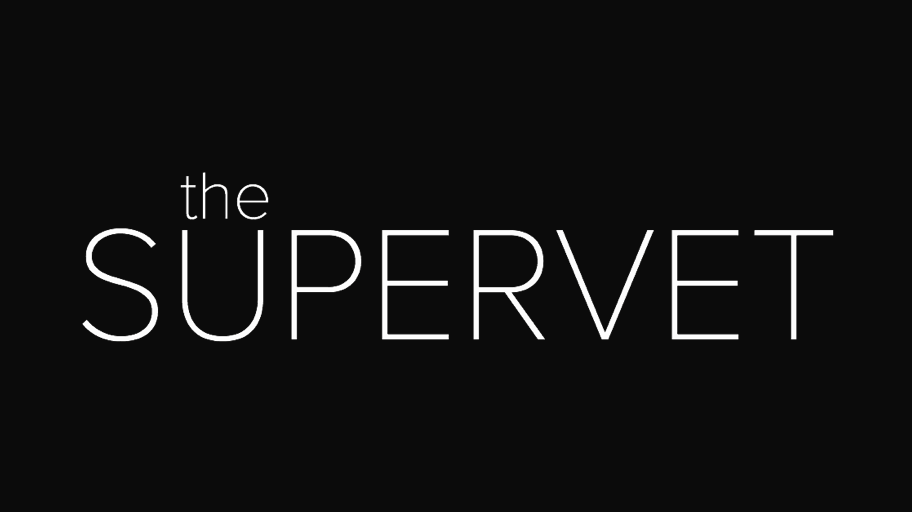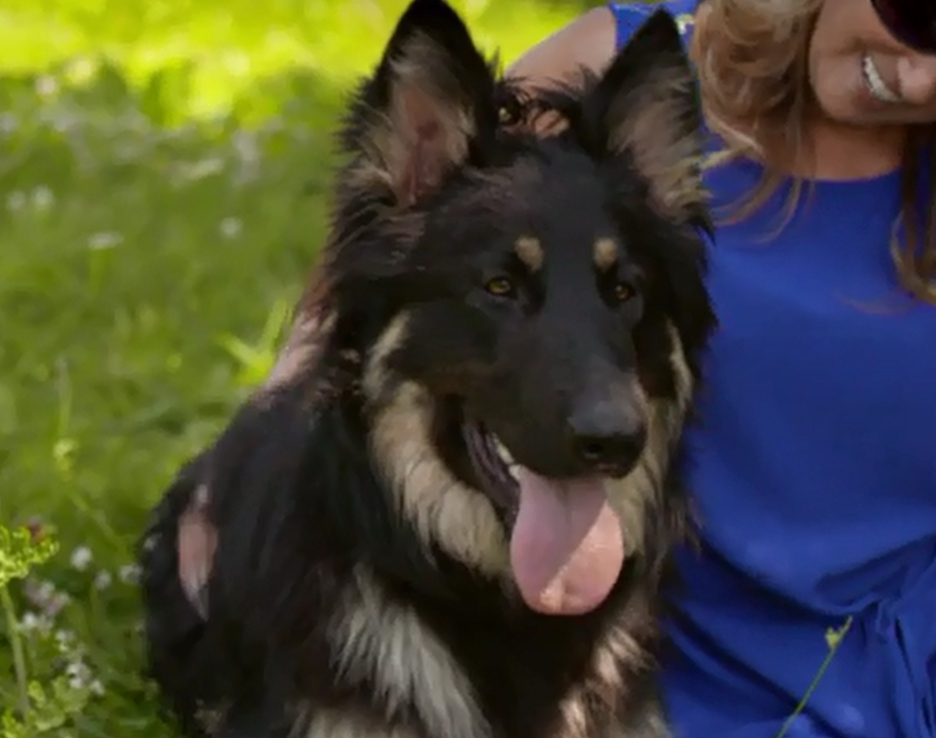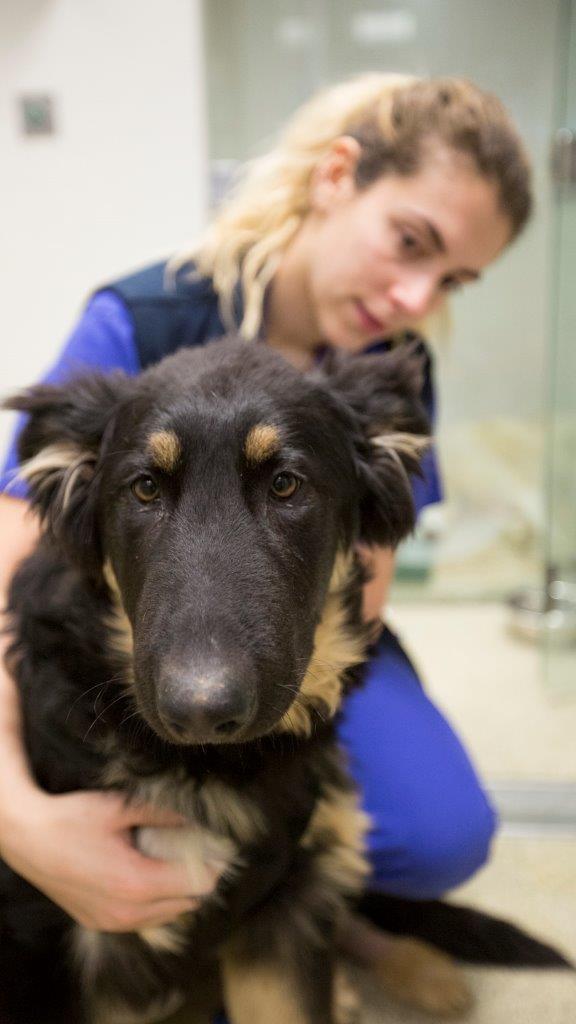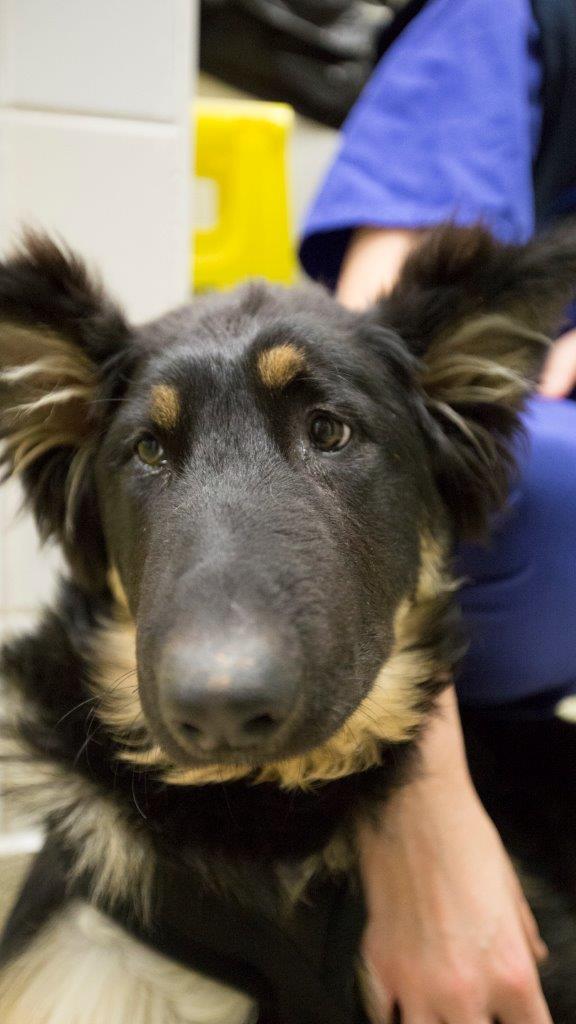Mason
Mason has a genetic disease called Osteochondritis Dissecans, where in some joints the cartilage doesn’t develop normally and the cartilage never turns into bone and eventually wears away leaving a hole. Noel has seen this before in German Shepherds, but when Mason’s results come through they are worse than Noel feared.
Their Story
Puppy Mason lives with Bridget and Michael along with a large menagerie of other animals on their farm in North London, including Mason’s sister Millie
The Problem
Bridget and Michael had only had Mason in their family for eight weeks when they spotted a problem. They noticed their young pup limping, which seemed out of the ordinary and worrying to them. A physical examination by Noel showed that he had severe problems with both of his knees that was causing him a significant amount of pain. Noel suspected Osteochrondritis Dissecans (OCD) in both of Mason’s knees, a disease that he had seen many times in German Shepherds, as genetic factors can predispose some breeds. OCD can occur in the joints of young, rapidly growing animals where the rate of cartilage growth outstrips the available blood supply, causing defects. Advanced imaging confirmed Noel’s suspicions and proved Mason to be more significantly affected than Noel suspected – Mason had two dramatic holes in the cartilage of his knees that could continue to get worse if nothing was done.
Treatment
Noel recommended that the best course of treatment was for him and his team of engineers to design two custom made synthetic implants to replace the worn out cartilage in Mason’s knees. During surgery Noel found that the left knee did indeed have a massive lesion that would need surgical correction, but the lesion on the right knee was smaller and seemed to have adequate cartilage cover. Noel decided to proceed with surgery on the left knee but hold off on the right knee, and only intervene in the future if it was deemed clinically necessary. During surgery, the location of the defect meant that Noel had to hyperflex the knee to expose the affected area, and then use a drill to carve out the right shaped hole for the implant to sit in. The implant consists of a special plastic cap that replaces the joint surface atop trabecular titanium for bone on growth. The surgery was a success, and he then went on to rest and recuperate and allow time for the implant to embed.
A bundle of joy and a bundle of problems… with nice sticky up ears - Noel Fitzpatrick
Outcome
Four months after his surgery, Mason was making wonderful progress and Noel was able to sign him off, fit and fixed. He is now back to playing in the fields with his sister Millie at home, and Bridget and Michael are delighted that the long journey to get him there was worth every second.
Fit and fixed, this is exactly what a wonderful outcome looks like. Luckily for Mason, his problems were spotted early in his life as there was a real potential that he would have been facing a much larger problem if it hadn’t been. Go grow up and live a full and energetic life Mason!



